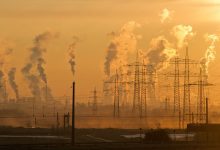The unexpected re-election of the federal Coalition government appears to be the trigger for a major push by both coal and gas developments in Queensland’s Galilee Basin, which is set to be ground-zero for what is regarded by environmentalists as one of the world’s biggest “carbon bombs.”
The Coalition victory, along with the Queensland Labor government’s sudden decision to fast-track the approval process for Adani’s Carmichael mine, means that the preparations for what will be one of the biggest coal provinces in the world could begin within weeks.
But the Adani mine is just one of many prospective projects in the Galilee basin, many owned by familiar Australian coal barons and gas companies, including the Waratah coal project owned by the country’s biggest ever investor in election advertising, Clive Palmer, and Hancock Prospecting, owned by Gina Rinehart, the country’s richest person and major donor to the Institute of Public Affairs.
Such is the extent of Palmer’s ambitions for the Galilee basin, it has been reported that the one-time parliamentarian – who spent an estimated $60 million in the recent election campaign – has met with several Queensland government departments in an effort to progress a development of a new coal-fired power station in the region.
In late 2018, the Queensland Government gave the greenlight to Macmines Austasia’s $7 billion China Stone coal mine, which would have neighboured the Adani mine, but the developer subsequently abandoned the project, which was likely related to China looking to cap its coal use.
Groups like the Climate Council have long warned of the environmental implications of developing the Galilee Basin coal reserves, estimating back in 2015, that burning all of the coal in the region would lead to “705 million tonnes of carbon dioxide [being] released each year – more than 1.3 times Australia’s current annual emissions,” according to the Climate Council’s head of research, Dr Martin Rice.
Meanwhile, Queensland mines and energy minister Dr Anthony Lynham, told the APPEA conference in Brisbane, that the Queensland Government is also opening up the opportunities for more companies to search for gas in the state.
“Queensland’s been doing the heavy lifting on gas supply for several years now, and we’re keeping up the pace.” Lynham told the conference.
“We want to see more petajoules of Queensland gas in pipes, more jobs in Queensland, and our gas driving jobs in Australian manufacturing.”
Energy infrastructure firm APA Group has already reached an agreement with gas producer Vintage to develop a new pipeline link between the Galilee Basin and Australia’s east coast gas market.
“We believe that the Galilee Basin has the potential to produce material quantities of gas. In order to fully commercialise any discovered gas, we will need to have access to the Australian east coast markets, so this MOU with APA is a large step toward making this possible” Vintage managing director Neil Gibbons said.
The announcement come as a new ACCC report has found that an expected surge in gas supplies and falling international prices, lower energy prices have yet to flow through to Australian consumers.
ACCC Chair Rod Sims told the industry that continuing high gas prices were putting the future of energy intensive industries at risk.
“Commercial and industrial gas users have been telling us for some time that at those gas prices, their operations are not sustainable in the medium to longer term,” Sims said.
“Businesses that rely heavily on gas are increasingly likely to relocate from the east coast or wind up their operations.”
The ACCC has released its Gas Inquiry 2017-20 interim report. The report’s shows that many industrial gas users will expect to pay between $9 to $11 per GJ for gas, despite the international export “netback” price falling to less than half these rates in recent months.
“Many other manufacturers are close to making critical decisions on their future operations. If wholesale gas prices do not soften, it is just a matter of time before they follow Dow, RemaPak and Claypave,” Sims added.
Australia has long struggled with conflicting priorities for the gas market. On one hand, growing global demand for gas from countries like Japan and South Korea has raising the potential for higher export prices for Australian gas.
Australian gas producers invested heavily to establish gas export terminals, establishing a link between Australia and the international market. This however resulted in a surge in domestic gas prices, as local users found themselves competing with international buyers for Australian gas.
It was a case of Australia trying to have its cake and eat it too, and gas producers have resisted demands to ensure lower prices for domestic customers.










